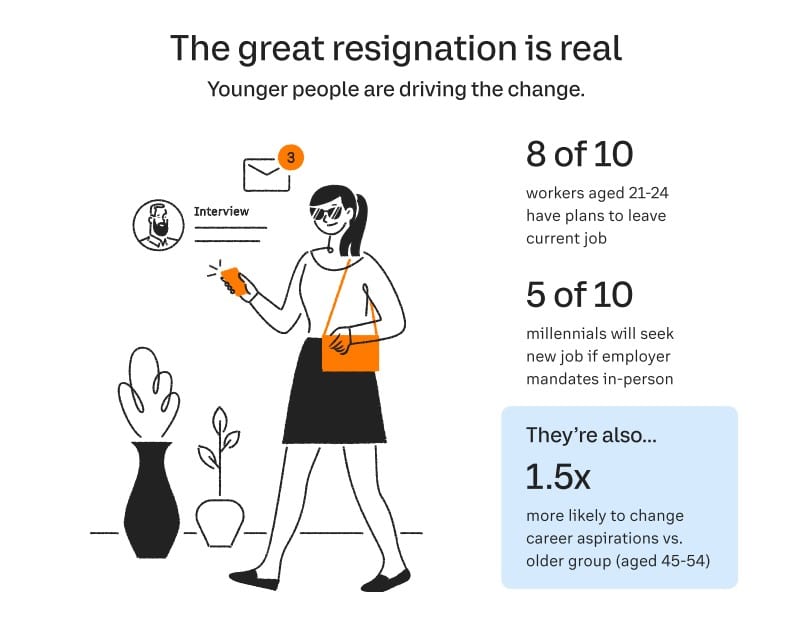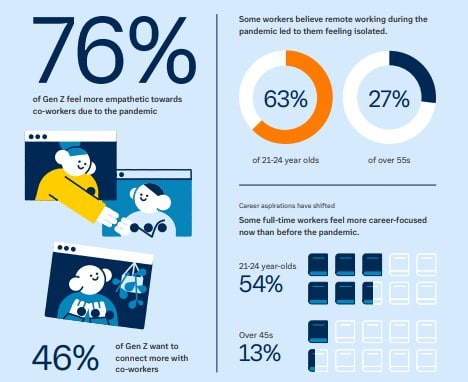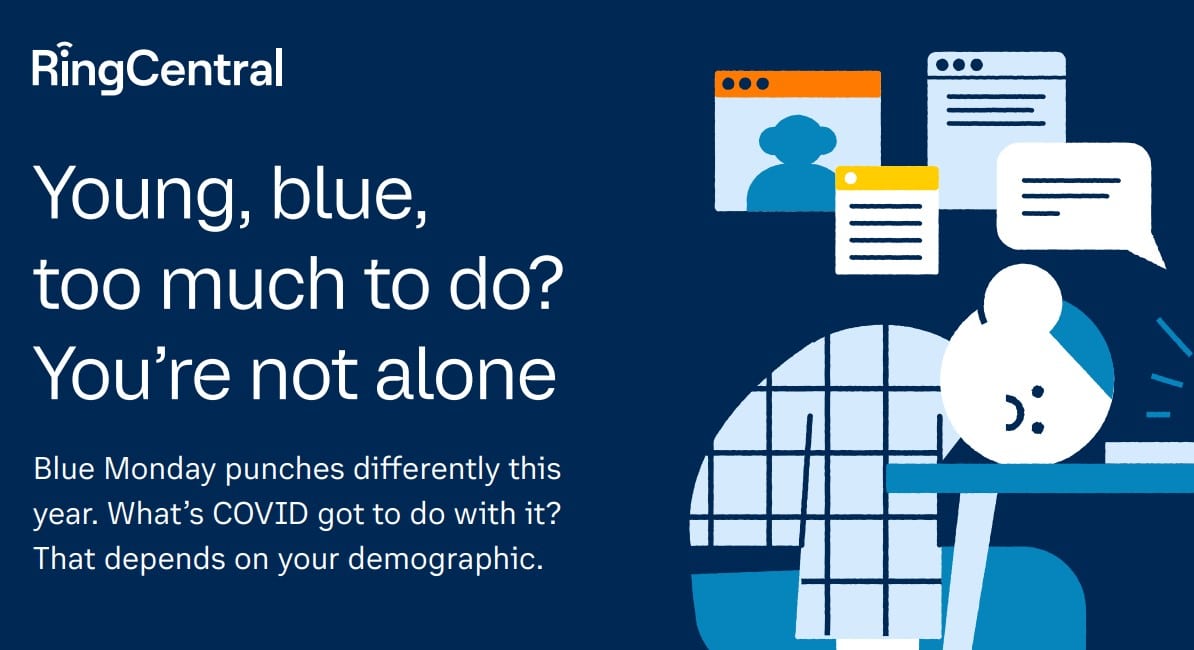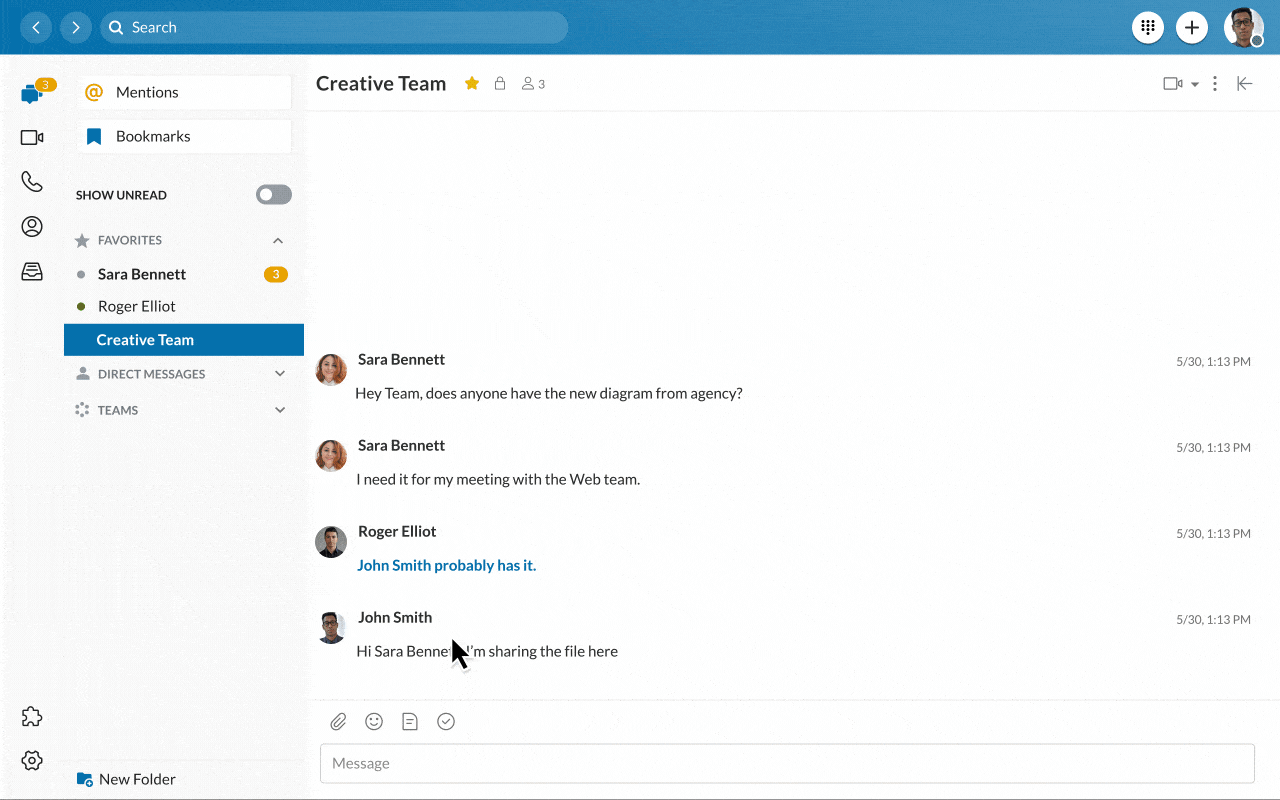With many workers experiencing the January blues, now is a good time to start thinking about employee wellness and how collaboration among employees can help overall wellbeing.
The Office of National Statistics (ONS) explains that the number of adults that experienced depression in the second part of 2021 reached around 1 in 6. Before the pandemic, this figure was 1 in 10. That means if there are business leadership goals to be set for 2022, checking in on employee mental health and driving better human connections in a virtual working world should be the top of the agenda.
One of the ways you can do this is through more efficient collaborative working practices.
In this post, we’ll look at:
- What is collaboration among employees?
- Why should you focus on employee collaboration?
- The 5 benefits of true collaboration among employees
- The risk of not investing in collaboration today
- The 8 ways to boost collaboration among your team
What is collaboration among employees?
Collaboration among employees means working together to achieve a common goal for the company. This normally involves brainstorming and sharing ideas, dividing the work fairly and bringing people together with a shared purpose.
There are two key types of collaboration: synchronous and asynchronous.
Synchronous versus asynchronous collaboration
Synchronous collaboration takes place when team members work together on projects in real-time. This often happens via collaboration tools such as video chat, instant messaging and other online meetings. Teams with an asynchronous work style might lean more on email communications. Asynchronous means conversations between colleagues might not necessarily happen at the same time. For example, a workforce across various time zones or those working different time shifts might use more asynchronous collaboration methods.
In most cases, organisations use a balance of both synchronous and asynchronous collaboration. It’s important to set boundaries on when more real-time synchronous collaboration might take place, particularly if you have employees who work reduced, flexible hours or those in different time zones; everyone needs to be able to switch off.
Likewise, synchronous collaboration can have a huge impact on team productivity. Rather than waiting for an email response, team members can now troubleshoot, brainstorm, discuss projects instantly, and then get on with what they need to do. This synchronous collaboration method helps with team efficiency, morale and mitigating feelings of isolation, which many employees have suffered during the pandemic.
Why should you focus on employee collaboration now more than ever before?

Facilitating better collaboration, engagement and a more team-centric culture in the workplace is likely high on your agenda right now as many businesses face the threat of The Great Resignation. The good news is you can make some simple changes to help address these areas and retain talent.
Effective collaboration supports better team productivity and can also have a huge impact on your employees’ sense of belonging. Allowing workers to feel part of a team in a supportive and open virtual workplace shouldn’t be underestimated. With colleagues physically detached from one another, the pandemic has had a huge impact on the mental wellness of workers.
Remote working left workers feeling isolated and anxious
In many cases, it’s the younger members of the workforce who might suffer from feelings of isolation. Putting processes in place to engage and connect your Gen Z and millennial workers should be a first step to better overall collaboration. Our recent studies have shown that Gen Z is twice as likely to feel isolated working from home than their older counterparts.
- 63% of 21-24-year-olds say remote work made them feel isolated, compared to 34% of 45-54.
- Two-thirds of 21-24-year-olds say they work with colleagues they’ve never met and therefore feel anxious about returning to the office.
- Nearly one in five (18%) 21-34-year-olds say their relationship with their supervisor is worse now than before Covid-19.
- 25% of those aged 21-24 say they have not had supervisor support during the pandemic.

Loneliness at work isn’t surprising
With a significant reduction in human contact, it’s no wonder so many have felt loneliness amidst the global crisis. And with most of us spending the majority of our time working, the modern workplace has a lot to answer for when it comes to wellbeing. As youngsters and older workers alike struggle with remote and hybrid working and the isolating effect it can have, business leaders must find ways to build regular collaboration into the daily routine for their workers.
The good news is, with the right tech, facilitating changes to improve employee wellbeing is possible. It might seem overly simple, but just implementing regular communication and effective collaboration with colleagues and supervisors could be a make or break for the mental wellbeing of your workforce, and now is the time to take action.

5 benefits of true collaboration among employees
While the benefits of online collaboration for remote workers are already well-known, it can be easy to overlook the more emotional impact of true collaboration on individual workers. Here are some of the key benefits of better employee collaboration in a virtual workplace:
1. Improved relationships
As a huge percentage of your workers say they have anxiety about returning to the workplace meeting colleagues for the first time in person, regular collaboration and face-to-face exchanges could really improve the ability to drive better working relationships. Activities such as informal meetings, 1-2-1 coffee meetings, or virtual team-building can significantly improve the relationships between colleagues, particularly for newly onboarded team members or those who haven’t met in person.
2. Sharing the workload In isolation
A heavy workload and the pressure of deadlines and responsibility can become too much, especially in a fast-paced, virtual workplace. Simply working as part of a team rather than in isolation can have huge benefits for individual workers. Knowing that they are not alone with their deadlines and that each team member plays a part in achieving a common goal means employees feel more engaged and have a sense of place within their company.
3. Time-saving
Being able to jump on a video call, quickly message a colleague or click to pick up the phone to ask a quick question means your team saves a lot of time. While many businesses relied solely on email communications before the pandemic hit, the ability to use collaboration tools made remote teams much more agile and efficient, meaning workers also get a better sense of achievement and purpose.
4. Improved problem solving
Feeling isolated and anxious can impact workers’ abilities and affect their confidence. Having their peers on hand to help with everyday challenges and queries can pay dividends when it comes to day-to-day productivity. Having the ability to connect with colleagues, supervisors, and other stakeholders instantly means workers have a better chance at overcoming daily hurdles together.
5. More engaged employees
All this ultimately means your workers will feel more unity with their team and engagement with the business in general. Having the right collaboration tools and processes in place could be a make-or-break solution for keeping your team members connected, productive and fulfilled in their roles.
What are the risks of not investing in collaboration today?
As business leaders debate the future of their workplace and an increasing number adopt a hybrid working model, those who revert to old methods of communication could be at risk of losing out on untapped efficiencies and could even lose talent.
Without the right solutions to facilitate true collaboration, businesses risk jeopardising working relationships, making teams less focused, and impacting their staff’s mental wellbeing.
Without regular, effective communication, business teams have a lack of clarity, a reduced sense of purpose, and ultimately feel less engaged and loyal to their place of work.
As young talent considers quitting their jobs, businesses must wise up to their workers’ needs, offering more flexibility and agility to help engage and retain their future leaders.
8 ways to boost collaboration among employees
Whether you’ve invested in the right tools yet, or you’re still weighing up your options, there are a few ways you can improve the collaborative experience for your employees.
1. Communicate regularly
While it may seem obvious, communicating little and often can help to make your employees feel more connected and engaged. Whether it’s meetings to discuss workflows or weekly one-to-ones to check-in, getting communication in the diary and prioritising it could have a huge impact when it comes to helping your staff feel less isolated.
This is where having all-in-one communications tools comes in handy. If your team can video call and instant-message each other from the same app, there’s a higher chance that they’ll communicate quickly with each other when something comes up:
2. Provide a collaborative work environment
More regular collaboration means having the right virtual environment. Whether you’ve opted to go fully remote, adopted a hybrid work model, or your staff are all back in the office, providing more opportunities for collaboration online, and offline is key.
3. Keep tabs on employee growth
Workers need goals and opportunities to stay engaged and focused on their roles. It’s important to ensure every team member knows how they could progress and how they might seize growth opportunities. If workers know what they’re working towards, they’ll be much more likely to play an active role in day-to-day collaborations and encourage others to do the same.
4. Use team-building activities
Whether online or offline, team building can boost team morale and create a better sense of unity among colleagues. Dedicating time for real team bonding could drive better colleague relations, innovative ideas, reduce anxiety and generate better, more productive collaborations.
5. Encourage team members to socialise informally.
Time seems to be in very short supply for everyone these days, and asking your team members to add something else to jam-packed days may seem as though it will not go over well. However, when team members can spend time together away from work, they see each other as human, not just their job title.
Some companies arrange team building activities or socials for employees to enjoy. It helps to “break the ice” when people are in a situation where they can freely talk about things other than work. This is a good way to build relationships, bring people together in a low-key way and allow them to get to know each other without feeling as though they need to be formal.
6. Lead your team by example
If you are the leader of a collaborative team, don’t fall into the trap of “Do as I say, not as I do” when catching up with your team members. Team leaders like yourself must be cooperative with others.
Set up time regularly to spend with team members. These one-on-one dialogues are an opportunity for each of you to get to know the other better. They also present opportunities for your team members to make requests and ask for support with task management. Be sure to listen carefully to each request and avoid making promises unless you know you can keep them. It is more important for your team members to know that they can trust you than for you to overpromise and underdeliver.
7. Create drop-in areas
Employees should not necessarily feel that they should stay tied to their work or desks for their entire workday to be productive. Team members can exchange ideas during unplanned interactions while getting coffee, at lunch, or waiting for a meeting to start. This can be difficuly different working remotely, but it’s not impossible.
For example, Team Huddle is designed to recreate spontaneous moments. Similar to services like Discord and Telegram, Team Huddle allows you to easily meet with teammates whenever you want in a persistent audio or video call. You, your colleagues, and even those outside of the organisation are free to come and go as you please, creating a true drop-in area in or out of the office.
8. Use tools to create bridges
It’s important to research and choose the right collaboration tool or collaboration platform for your business. Once you have the right tools and apps in place, daily collaborations become a habit. You’ll see significant improvements in your team’s productivity and general morale.
Originally published Jan 14, 2022, updated Jan 06, 2023


